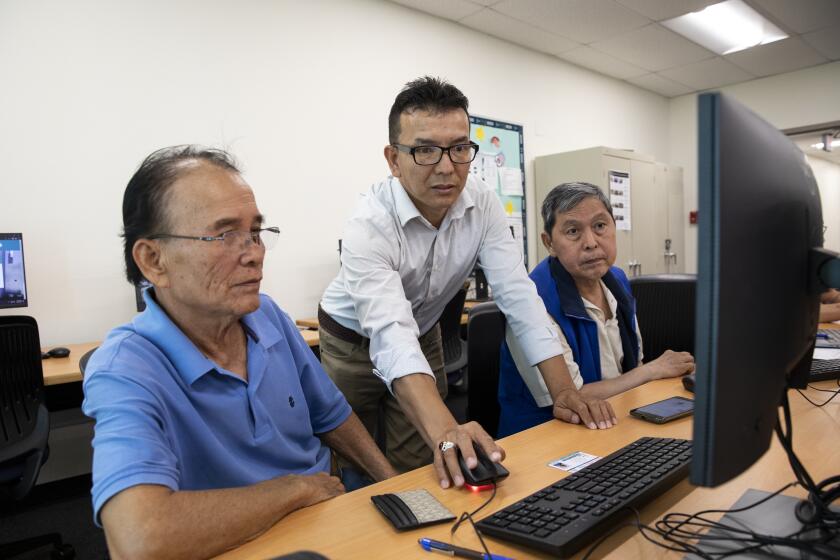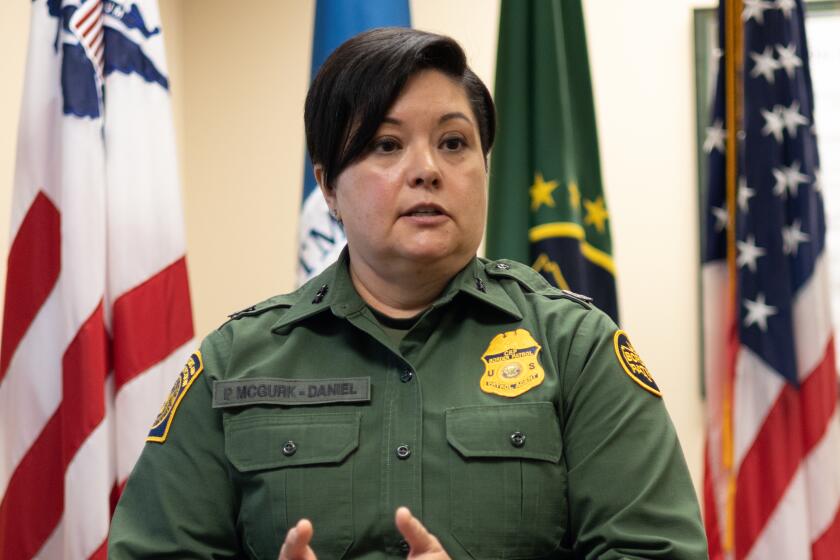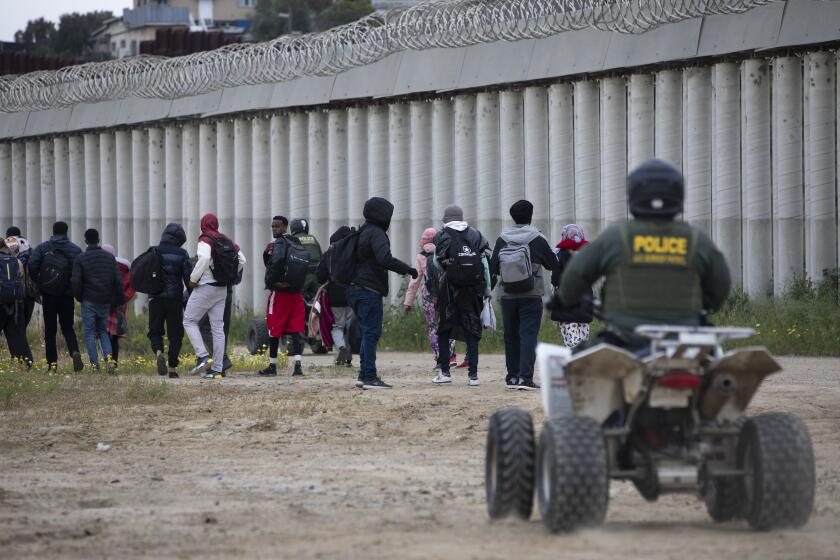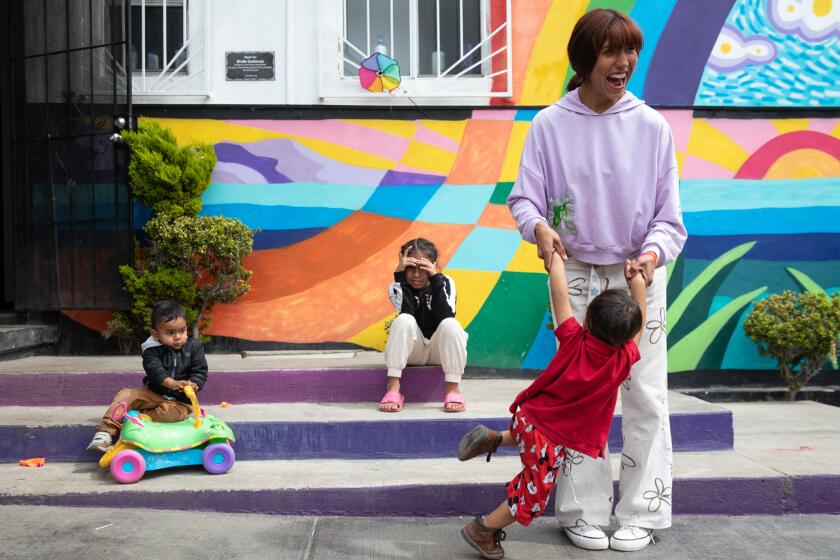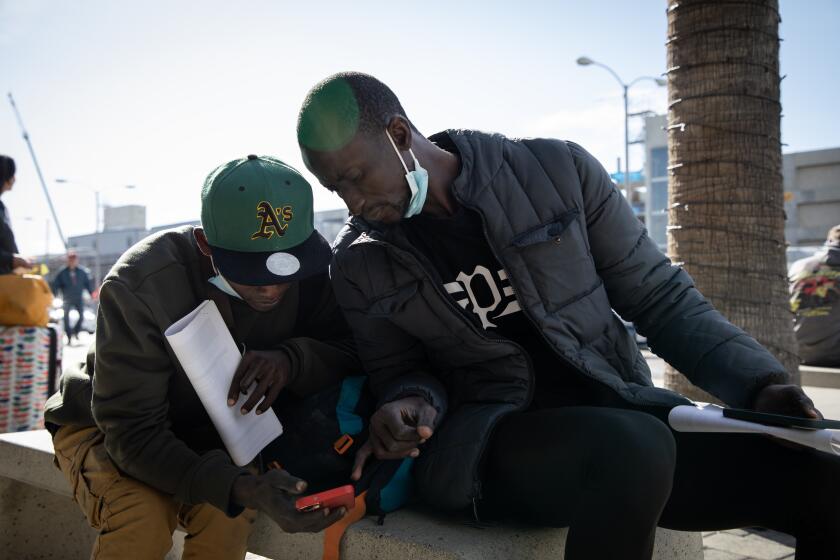Focus: What does ‘get in line’ mean in immigration debate?
Those who support President Donald Trump’s increased immigration enforcement frequently say that immigrants should “get in line” to come to America, rather than enter without authorization.
But, what line?
For most people who might want to come to America, there is no line. Potential immigrants generally need a family member or employer in the U.S. as a sponsor before they can seek entry. And those who have such a host face waits that many would consider unreasonably long.
Mexican brothers and sisters of American citizens who applied to come to the United States legally almost 20 years ago are just now getting green cards.
For siblings in the Philippines, the delay is even longer — 23 years. Siblings from India have waited 14 years. Both sides in the immigration debate have used the concept of an immigration “line” in their rhetoric over the years. Those who want stricter limits on immigration say that unauthorized immigrants should wait their turn in line to come to the United States.
But even advocates of immigration reforms designed to accommodate unauthorized immigrants have talked about such a line. President Barack Obama pushed for allowing unauthorized immigrants to get in line to obtain legal status when Congress last considered an overhaul of immigration laws.
Some immigration attorneys took issue with the phrase when it was used in that context as well. Immigration attorney Edward Orendain said that the “line” is a misconception.
“I can understand that some people feel they’re frustrated that people are ‘cutting in line,’ but there is no line for some people, and for those who can get in a line, the waits are ridiculously long in some cases,” Orendain said by telephone.
There are a few legal options for people from other countries who want to move permanently to the United States:
- Family members or employers can petition for their green cards.
- If they are from a country that has historically low rates of immigration to the U.S., they can join a lottery for a “diversity visa.”
- If they’ve been persecuted or tortured, they can be sent by the United Nations as refugees, or they can come straight to the U.S. border and ask for asylum.
Some people don’t qualify for any of these options. For those who do qualify, the wait can take decades.
Karla Rivera, 34, was born in Mexico when her mother gave birth a month early while visiting family in Mexico. Rivera has been waiting most of her life for legal entry to the U.S.
Rivera’s mother received a green card in the 80s as part of Ronald Reagan’s amnesty program. Rivera lived with her grandmother in Mexico until her mother was able to bring her to the U.S. at age 5 under a family unity program created for immediate relatives of amnesty green-card holders.
Rivera’s mother began trying to file the paperwork for Rivera to get a green card in 1991 and successfully filed all of the forms in 1998. Rivera is still waiting for her green card.
“You want to get to the finish line, but it doesn’t seem like you’re ever going to get there,” Rivera said.
Rivera’s attorney, Ginger Jacobs, said Rivera has a “hybrid status” because of the family unity program. She is neither unauthorized nor a resident.
Rivera excelled in school, but she was not eligible for any federal funding to go to college. She now works as a nanny.
Every two years, she has to renew her status with the family unity program, which costs more than $500 with each renewal.
When she finally gets her green card, Rivera said, she’s going to apply to become a U.S. citizen as soon as she can.
“When people say, ‘The system is broken,’ and people say, ‘Well, they need to obey the law’ - Karla and her mom obeyed the law,” Jacobs said, “and she still has no green card. Where’s the justice in that?”
Family members fall into four categories, and most categories — all of those besides “immediate relatives,” like spouses and unmarried children under age 21, of U.S. citizens — are capped annually.
The cap for family-sponsored visas is 226,000 per year, and employer-sponsored is 140,000, according to the State Department. Those caps have created backlogs.
By law, no country’s citizens can have more than seven percent, or 25,620, of the capped visas given out each year. That means the wait for citizens of certain countries is, in some cases, much longer than others.
“For a sibling, that’s a ridiculously long amount of time to wait,” Orendain said. “Life doesn’t stop just because you’re waiting for a visa to become available. People, their lives change. They get married and have children. Some of them die.
“How do we know where we’re going to be 20 or 23 years from now?” Orendain added. “It’s impossible for people to really make plans and be able to prepare for anything.”
Waits for employer-sponsored visas are not as long as family-sponsored visas, but some are still more than a decade. Potential employee immigrants from India face the longest delay, at 12 years for a skilled and professional worker visa. Vaani Chawla, a local immigration attorney, said one of her clients who came to the U.S. on a temporary work visa has been waiting for his green card since 2005.
Because of a change in law in the early 2000s, Chawla said, her client has been able to stay working in the U.S. while he waits his turn. Living in that limbo can limit a person’s ability to advance his or her career through changing jobs during that time period, Chawla said. “They’ve been waiting for a very long time,” Chawla said. “Children grow up in that much time.”
Rohan Bavadekar’s application for a green card has taken so long that his immigration attorney moved from Houston to San Diego during the process.
Bavadekar, 39, applied for an employer-sponsored green card in September 2010 and knows he likely still has years left to wait. The State Department is currently processing applications from 2008 for his visa category if the applicant was born in India.
“There is this whole debate going on about immigration reform and everything. The people who get talked about more often are those people who came here illegally,” Bavadekar said via telephone. “I don’t see a word being spoken about people like us who are already here, who have been paying taxes, who have been always in status, and nothing has been done for us or even spoken about our situation. That is the most disappointing thing.”
Bavadekar, who lives in Houston, is originally from Mumbai and has lived in the United States since 2001. He came first on a student visa to get his master’s degree in engineering in Texas. When he graduated, he switched to an H-1B visa, a temporary work visa.
He said he would like to see more priority given to those like him who have advanced degrees.
There are longer delays for employment visas for those born in China, El Salvador, Guatemala, Honduras, Mexico and the Philippines as well because of the annual caps.
Those who support Trump’s immigration policies want more restrictions on who can stand in the lines to begin with. Many push for fewer visas for family members, a move away from the U.S.’s historical emphasis on policies that prioritize family reunification. Some have suggested adding restrictions based on a hopeful immigrant’s economic situation or moving to a merit-based system.
Those who oppose Trump’s immigration policies want the U.S. to offer more legal routes to residency to increase the options for lines to stand in and reduce wait times. No matter which direction policy ends up moving, there are likely to be people who do not qualify to come to the U.S. through any program.
Those who have no line to stand in may try to come anyway. Migrant advocates say that if people get desperate enough, they will come whether they’re allowed to or not.
Even U.S. Border Patrol’s union, which has vocally supported Trump, seems to agree with that sentiment.
“When it comes to people, we’ve found that you build a 20-foot fence, they build a 21-foot ladder,” said Shawn Moran, vice president of the National Border Patrol Council, shortly after the November election.
Get Essential San Diego, weekday mornings
Get top headlines from the Union-Tribune in your inbox weekday mornings, including top news, local, sports, business, entertainment and opinion.
You may occasionally receive promotional content from the San Diego Union-Tribune.

